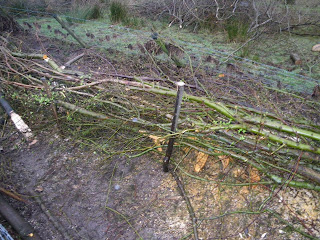To celebrate both Wordsworth’s Lake District legacy and the daffodil, on 1st April 2012 seven locations throughout Cumbria are taking part in the National Gardens Scheme’s Daffodil Day. The properties involved are Holker Hall (Cark-in-Cartmel), Summerdale House (Nook), Dora’s Field (Rydal), Rydal Hall (Rydal), Acorn Bank (Temple Sowerby), High Moss (Portinscale) and Carlisle Cemetery (Richardson St, Carlisle). From 11am until 4pm they are all throwing open their gates and holding a Wordsworth Daffodil Day to allow the public to see a crowd, a host, of golden daffodils.
Dora's Field which was originally known as The Rashfield, with the name being derived from rush field, because of the damp nature of the ground which would have originally supported mainly rushes.This plot of land was purchased from the Backhouse family by William Wordsworth in 1826 as a defence strategy. The Wordsworth's were tenants of Lady Anne le Flemming at Rydal Mount situated behind Dora's Field from May 1813. In 1825 Lady Anne announced her intention of giving the tenancy of Rydal Mount to a relative. Under threat of eviction, and desperate not to be forced away from the idyllic Rydal, William purchased the field and made it clear to Lady le Fleming his intention of building on the field in what ever way he wished (this would have been right in the view from Rydal Mount). George Webster, a famous Kendal architect, was even paid to draw up a design.
In the event, this contingency plan was not needed as the threat was withdrawn. The family retained the field and it was given to Dora, Williams daughter.When Dora tragically died William, his wife and their gardener planted hundreds of Daffodil bulbs in her memory.
The field (0.6ha) was gifted to the National Trust by Gordon Wordsworth in 1935 for the benefit of the public. The National Trust now maintains the paths and prevents the open areas from returning to woodland and losing the open views. Several benches are situated around the garden to allow visitors time to pause for a moment amid the hectic rush of life.
Volunteers helping resurfacing the paths
Crushed slate is used from our local quarry in Elterwater
Fallen limbs from trees are stacked to create a habitat pile for beetles, spiders and other small Fauna
The Chapel of St Mary at Rydal was funded by Lady Le Fleming of Rydal Hall, with work starting in 1823 and being completed the following year. Wordsworth helped choose the church site which was located just down the hill from his home, Rydal Mount, and was originally the Le Fleming orchard. A tower, nave, and chancel make up the church, which has seen repairs and renovations during the 20th century.So if you're in the Rydal area on the 1st April, then please call in to Dora's field and say "Hello", we will have volunteers and National Trust Rangers on site to answer any questions and talk about the history and management of this wonderful location.

















